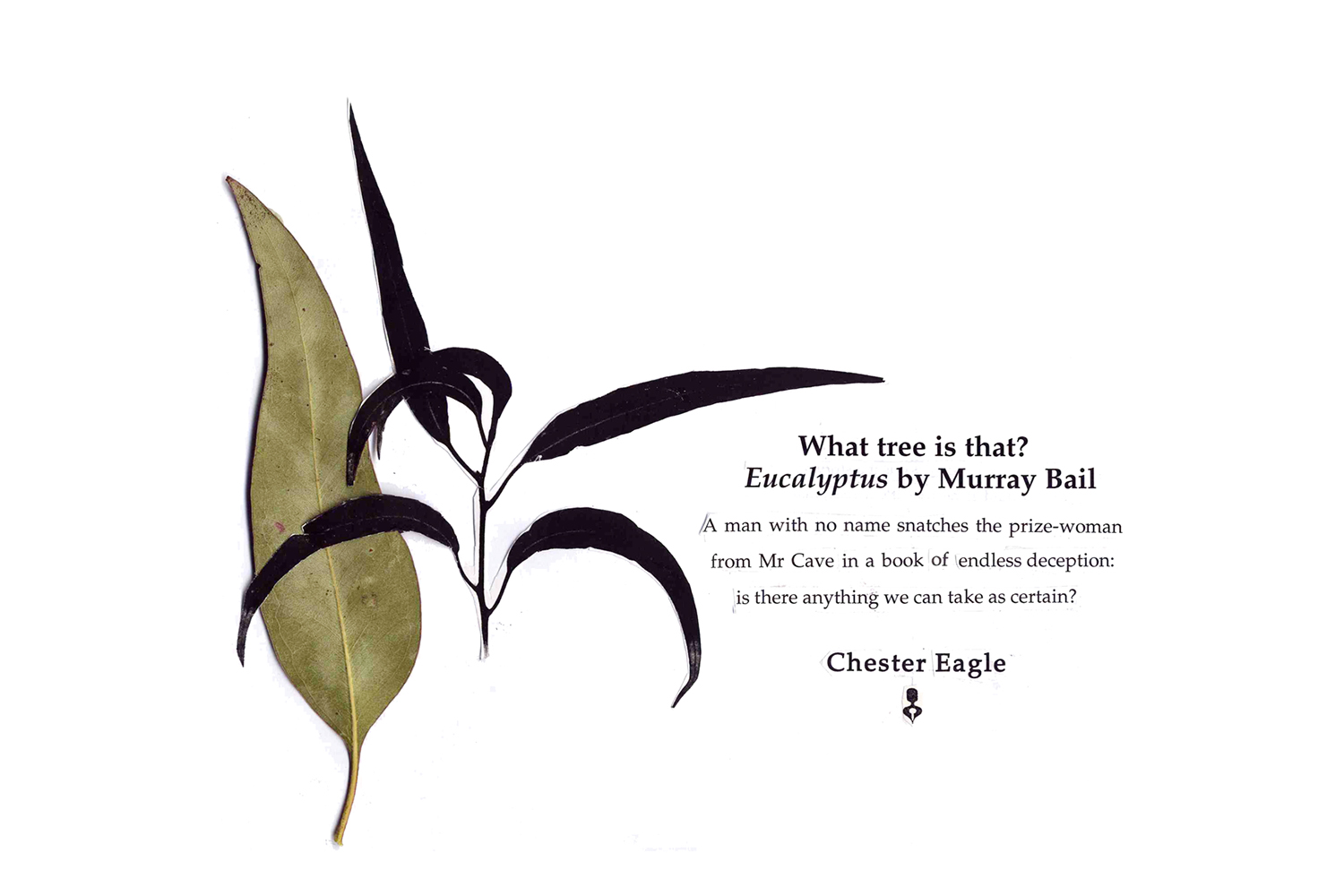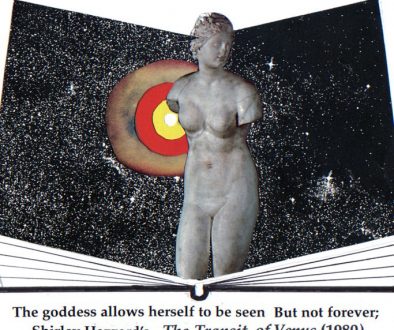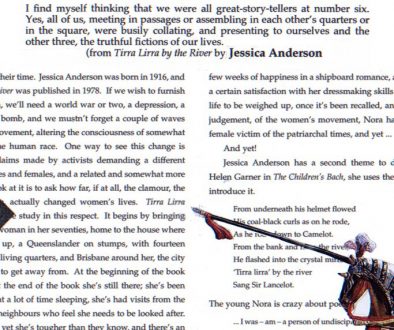17. What tree is that? Eucalyptus by Murray Bail

17. What tree is that? Eucalyptus by Murray Bail
A man with no name snatches the prize-woman from Mr Cave in a book of endless deception: is there anything we can take as certain?
What tree is that? Eucalyptus by Murray Bail:
When I first became interested in trees, authorities said there were just over six hundred eucalypts; this number included sub-species identified with a further name, as for example, Eucalyptus albens var. elongata. I found it reassuring to know, when I stood surrounded by bewildering bush, that trained minds had been through before me. Since then, I discover, scientists have been re-classifying, and the process never stops. How many species there are today, I don’t know, and I don’t much care because I know that the number will change again as other, newer minds approach the problem …
What problem? That of classifying, differentiating, identifying … Why bother to do this? Why give them names at all, and if we must, why not characterise them by the birds that nest in them, the creatures that live in them, chewing little holes; that is, identify them by where they sit in the hosting of the endless feed chain that we would need, if we lived among trees in the aboriginal way?
Why not indeed? Well, first answer, we’d never have had Murray Bail’s Eucalyptus, a book about the classification, the naming, of every species of the genus for which Australia is noted. I find myself on the verge of telling you what the book’s about, but if I do that I’ll be falling into Bail’s trap, and I suppose I can’t avoid it because I’m trying to guide you through the book and I can’t do that without guiding myself. Here goes!
Central to the book is the project of a man called Holland, who arrives in an area west of the ranges in New South Wales. He’s new in the area, which means that his identity is ‘New Holland’, so, you see, he brings with him a very old conception of our country, which means, again, that we can’t be quite sure how to take him. [read more]
Introduction:
In 1981 Patrick White published an autobiographical book called Flaws in the Glass; the Melbourne Age commissioned two reviews, one of them from Hal Porter, who said, among many things unflattering to ‘Mr White’:
Writers of my sort can be said not so much to read as to examine another writer’s work rather as one car freak examines the vehicle and driving of another car freak. One says, “Splendid vehicle! Superb driving!” Or, “Nice vehicle! Ghastly driving!” Or, “Can’t stand that kind of cumbersomely pretentious vehicle! And what bewildering and erratic driving!”
Hal confesses that the third attitude is his to the novels and plays of ‘Mr White’. I will say no more at this point about Mr White or Mr Porter, but I quote this comparison of writer and car freak because in the essays that follow I am the freak who comments on others of his kind. I know I can’t see my essays as others will see them but I imagine some readers accusing me of many things, and others, well trained, perhaps, in one or another school of literary or social criticism, who will think my observations no more than shallow or ignorant. To such people I can only say that these essays offer whatever it is that a fellow-writer can offer, and don’t pretend to offer anything else.



